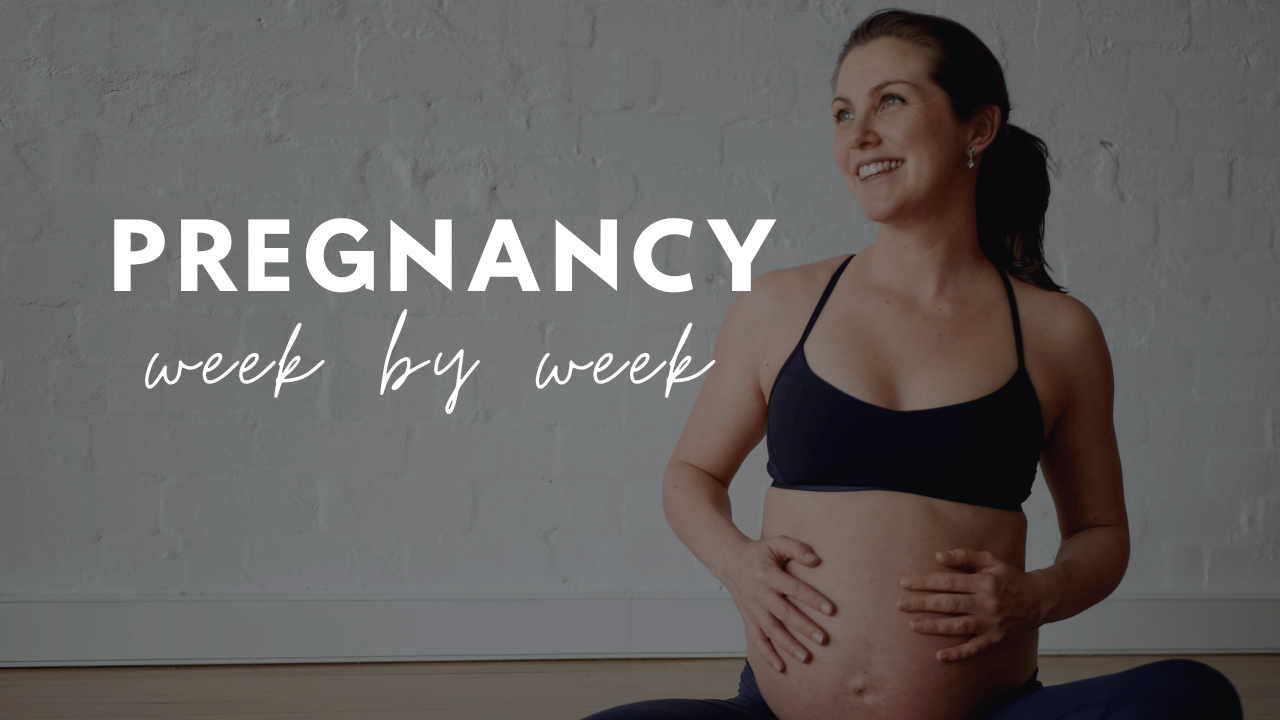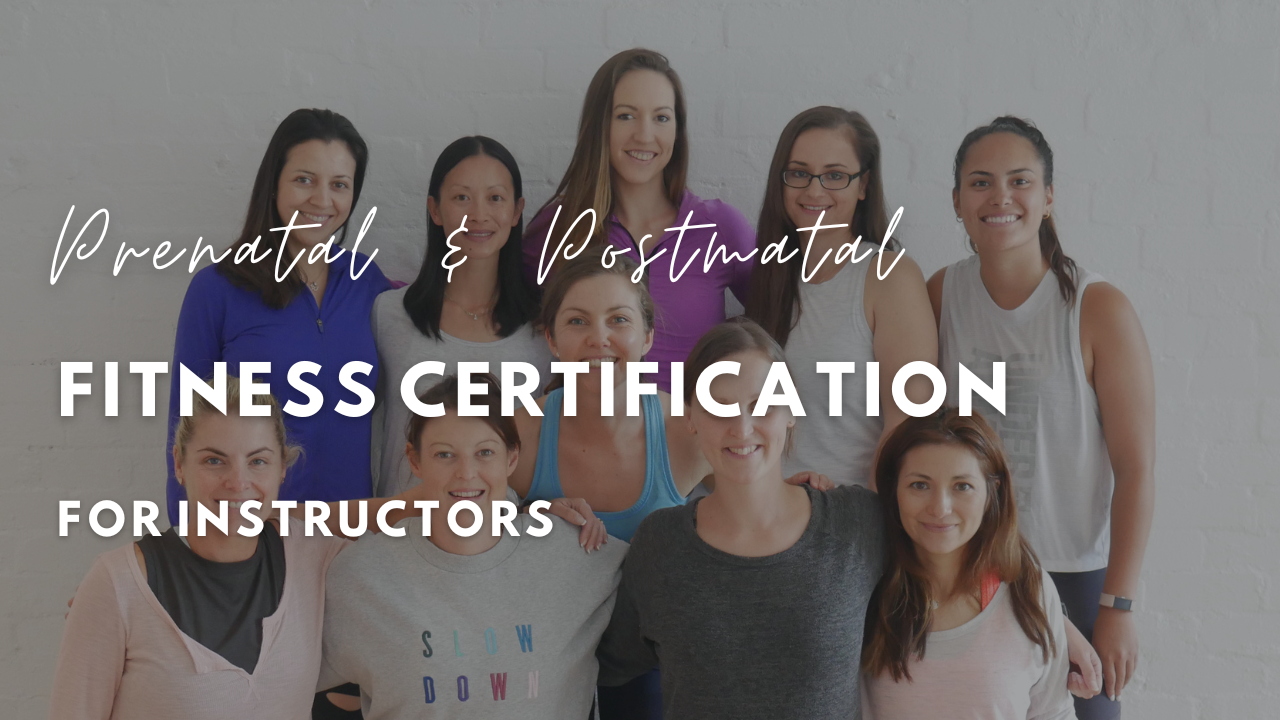6 Birth Ball Exercises to Prepare for Childbirth
Apr 03, 2024
6 Birth Ball Exercises to Prepare for Childbirth
Childbirth is a transformative experience for every expecting mother, both physically and emotionally. Preparing you for this big milestone event is exactly why I'm here to help. Today, I want to give you the best birth ball exercises to help prepare you for childbirth.
While it's impossible to predict exactly how labor will unfold, there are ways to prepare your body and mind for the journey ahead. One super effective method is utilizing a birth ball, also known as a stability or exercise ball.
These large, inflatable balls provide support and comfort during pregnancy and can aid in labor and delivery, I highly recommend you get one for childbirth preparation, but also to help your back and hips in your pregnancy.
Birth Ball Exercises for Labor
1. Hip Circles
Hip circles are an excellent exercise to alleviate tension in the hips and lower back, areas commonly affected during pregnancy. To perform this exercise, sit on the birth ball with your feet flat on the ground, hip-width apart.
Begin by gently rotating your hips in a circular motion, first clockwise and then counterclockwise.
Focus on maintaining a slow and controlled movement, allowing your hips to open up and release any tightness.
Hip circles not only improve flexibility but also encourage optimal fetal positioning for labor, plus helps your back and hips feel so much better, anytime of day.

2. Pelvic Rocks on a Birth Ball
Pelvic rocks help strengthen the muscles of the pelvic floor and promote proper alignment of the pelvis. Sit on the birth ball with your feet flat on the floor and your knees bent at a 90-degree angle. Place your hands on your hips for support.
Slowly tilt your pelvis forward, arching your lower back slightly, then tilt it backward, rounding your lower back.
Repeat this rocking motion, moving smoothly between the two positions.
Pelvic rocks can help relieve back pain and encourage the baby to descend into the birth canal during labor.

3. Frog Sways
Frog sways are beneficial for opening up the pelvic area and stretching the inner thighs, which can be particularly tight during pregnancy.
To be fair, this is a little harder to get into position so take your time. If it's not for you, just take it out. You are essentially lying back over the ball and squatting down then swaying side to side just a little.
Focus on breathing deeply and relaxing into the movement. Frog sways can help increase flexibility and prepare your body for the wide range of motion needed during childbirth.

4. Rest and Sway
As labor progresses, finding moments of rest and relaxation becomes crucial for conserving energy and managing discomfort.
The rest and sway exercise allows you to do just that while maintaining gentle movement. Kneel with the ball in front of you, and hang your arms and or chest over the ball, close your eyes and focus on your breath as you gently sway your body from side to side or back and forth.
Allow your muscles to relax, releasing any tension you may be holding. Rest and sway is an excellent way to stay connected to your body and baby during labor.

5. Kneeling Cat Cow
The kneeling cat cow exercise is a variation of the traditional yoga pose adapted for use with the birth ball. Kneel on the ground in front of the birth ball and place your hands on the ball for support.
Inhale as you arch your back, allowing your belly to drop towards the floor (cow position).
Exhale as you round your spine, tucking your chin to your chest and drawing your belly button towards your spine (cat position).
Continue to flow between these two positions, syncing your breath with your movements. Kneeling cat cow helps relieve tension in the spine and pelvis, promoting flexibility and relaxation during childbirth.

6. Low Lunge Birth Ball Exercise
The low lunge is a dynamic exercise that stretches the hip flexors and strengthens the legs, preparing your body for the physical demands of labor.
Begin by kneeling on the ground with one foot in front of you and the other knee resting on the floor.
Place your hands on the birth ball for support and gently press your hips forward, feeling a stretch in the front of your hip and thigh.
Hold this position for a few breaths, then switch sides.
The low lunge can help improve flexibility and mobility in the pelvis, making it easier for the baby to descend during labor.

Incorporating birth ball exercises into your prenatal routine can provide numerous benefits as you prepare for the big day.
From enhancing flexibility and strength to promoting relaxation and comfort, these exercises offer valuable support throughout pregnancy and labor.
Whether you're a first-time mother or preparing for another birth, practicing these six exercises can help you feel more confident and empowered.
Remember to listen to your body and consult with your healthcare provider before starting any new exercise regimen.
With dedication and practice, you can harness the power of the birth ball to optimize your birth experience and welcome your baby into the world with strength and resilience.
Not sure what size birth ball to get when pregnant, watch this video.
Doing birth ball exercises to induce labor will be a personal choice you will need to make. There are no rules that state you have to use a ball during pregnancy or labor. In fact, many women don't. But if you do want to know the best birthing ball exercises to help relieve labor pain then I want you to watch the video I have below.
Pregnancy and delivery can be hard on the body so any position, exercise or technique you can use to ease the pain and make it a more empowering experience for you the better.
I have heard from many of our PregActive mamas that using a birthing ball helped to improve or relieve some of the general complaints of back pain, stress, and pelvic or abdominal pain.
Note: Always check with your GP or midwife before you use a birthing ball as your personal situation may prevent you from using one.
Our PregActive App
To download our FREE PregActive Pregnancy APP go to the Apple APP store or the Google APP store and search for 'PregActive.'
What is a Birth Ball?
While we call them by a different name, a birthing ball basically the same as exercise balls. These balls need to be strong to hold your weight and support you through various exercises and movements, so they are made from a durable material. This makes them difficult to puncture.
When Should You Start Using A Birthing Ball?
You can start using a birthing ball from very early on in your pregnancy. There are many great exercises that will help to strengthen your core. And then, as you progress into your second trimester, you can use it to help you with some gentle pregnancy exercises that help you to prepare for labor.
What's the Difference Between A Birthing Ball and A Gym Ball?
Birthing balls and gym balls are basically the same thing as they both need to be made from anti-burst materials. If they do puncture, they will deflate slowly so make sure the ball you buy is anti-burst.
Your birthing ball will be slightly larger to give you more comfort. It will have an anti-slip finish which is ideal when sitting on the ball for long periods without slipping off.
Birthing Ball Size
Birthing balls aren't one size fits all. You will soon find that they come in small, medium, or large sizes. You can buy a fully inflated ball from a store or if you buy one online you will find that the ball must be inflated after purchase.
How To Choose a Ball
Your feet need to be planted on the floor. If you are on your tippy toes while sitting on the ball then it is too big. And if your knees are positioned higher than your stomach, the ball is too small.
As a general guideline, ball sizes correspond to height. You can use the following measurements as a guide but I would recommend trying out some of your friend’s balls or ones at your local gym first.
So What Is The Best Size For A Birthing Ball? If You're:
1. 5-foot 4 inches (165cm) or shorter select a ball that is 55 cm
2. 5-foot 4 to 10 inches (178cm) select a ball that is 65 cm
3. Over 5-foot 10 inches (178cm+) select a ball that is 75 cm
What Are the Benefits Of A Birthing Ball?
Birthing balls are very popular as they can help reduce pain you may experience, and it will also help you feel more comfortable during labor. And don't think you have to wait until labor to use a birthing ball. Many women find great benefit in using a ball to also help relieve pain and pressure in the months or weeks leading up to delivery.
Birth balls are definitely popular for many mamas because they can reduce pain and during labor. You can also use them throughout your pregnancy for comfort as when you sit on the birth ball it strengthens your abdomen and lower back.
Benefits:
Sitting on the curve of a birthing ball might relieve pressure in your;
1. Pelvis
2. Lower back
3. Spine
Sitting on the ball in an upright position can also encourage the opening of your pelvic muscles. This will allow room for the baby to descend into the pelvis in preparation for birth.
Using a birthing ball during labor can also reduce stress, anxiety and labor pain.
A study in 2013, studied over 200 pregnant women who were admitted to the hospital with labor pains. These women completed 30 minutes of birthing ball exercises and when the researchers measured their pain and anxiety level after the exercises, they discovered that the women reported significant improvements in reduced labor pain.
Here are some suggestions for how you can use the ball during pregnancy, labor and after delivery.
1. How To Use A Birthing Ball During Pregnancy
If you develop back pain when pregnant then you may find that sitting on a birthing ball may relieve some of this pressure and help you feel more comfortable.
Birthing ball exercises can also improve your posture, strengthen your stomach and back muscles, and prepare your body for delivery.
Sitting in an upright position on a ball may also change your baby from a posterior position to an anterior position. Achieving this may also relieve back pain.
2. How To Use A Birthing Ball During Labor
One of the main challenges during labor is to find a comfortable position. Before labor, try and experiment with various positions so you can find the best one for you to use during labor. And by knowing several exercises, you may find that you want to switch positions during labor.
In my video (above) I will show you the best birthing ball exercises and positions. These include showing you how to correctly rock from side to side, or from front to back.
Getting into a hands and knees position (while using a birthing ball) may help to take pressure off your lower back and pelvis. This position can provide comfort if you're nearing the pushing stage and can't sit due to pelvic pressure.
Partner Assisted
Some women also sit on a birthing ball while leaning forward on a table or bed, so that their partner can massage their back.
3. How To Use A Birthing Ball After Giving Birth
It's natural to have pain or pressure in the area between your vagina and anus after giving birth. As a result, you may find that sitting down in a chair or seat can be uncomfortable.
Instead, what you can do is to get your partner to slightly deflate the birthing ball to make it softer and more comfortable so you can sit on the ball post birth.
Birthing Ball Positions
- Kneel and lean - begin by kneeling on the ball with open knees and lean upper torso on the ball.
- Sitting on the ball - start by sitting with feet wide apart and flat on the ground. Be sure to keep a straight back and good posture.
- Stand and lean - you will want to place the ball on a high surface such as your bed and stand with open legs while learning on the ball.
Can A Birthing Ball Help Induce Labor?
If you're overdue, then gently rocking on your birthing ball can help nudge your little one into the correct birthing position. But generally, using a ball will not induce labor.
Can Bouncing on Ball Break Waters?
So a common question I hear is whether or not sitting on a birthing ball can also induce labor. Although you might go into labor while sitting on a birthing ball; there's no evidence to suggest that these balls can induce labor or break your water.
All of these Similar Questions have the Same Answer.
1. Does birthing ball help start labor?
2. How long do you bounce on a ball to induce labor?
3. Does bouncing on a birthing ball help you dilate?
4. How can I ripen my cervix to go into labor?
5. Can jumping up and down induce labor?
Answer: There's no evidence to suggest that these balls can induce labor, break your water or help you dilate.
I have personally found that using a birthing ball can provide a lot of comfort before and during labor. It can help relieve your back pain and decrease pelvic pressure. I hope that by watching my video you are able to learn some of the positions that can help you during your labor.






